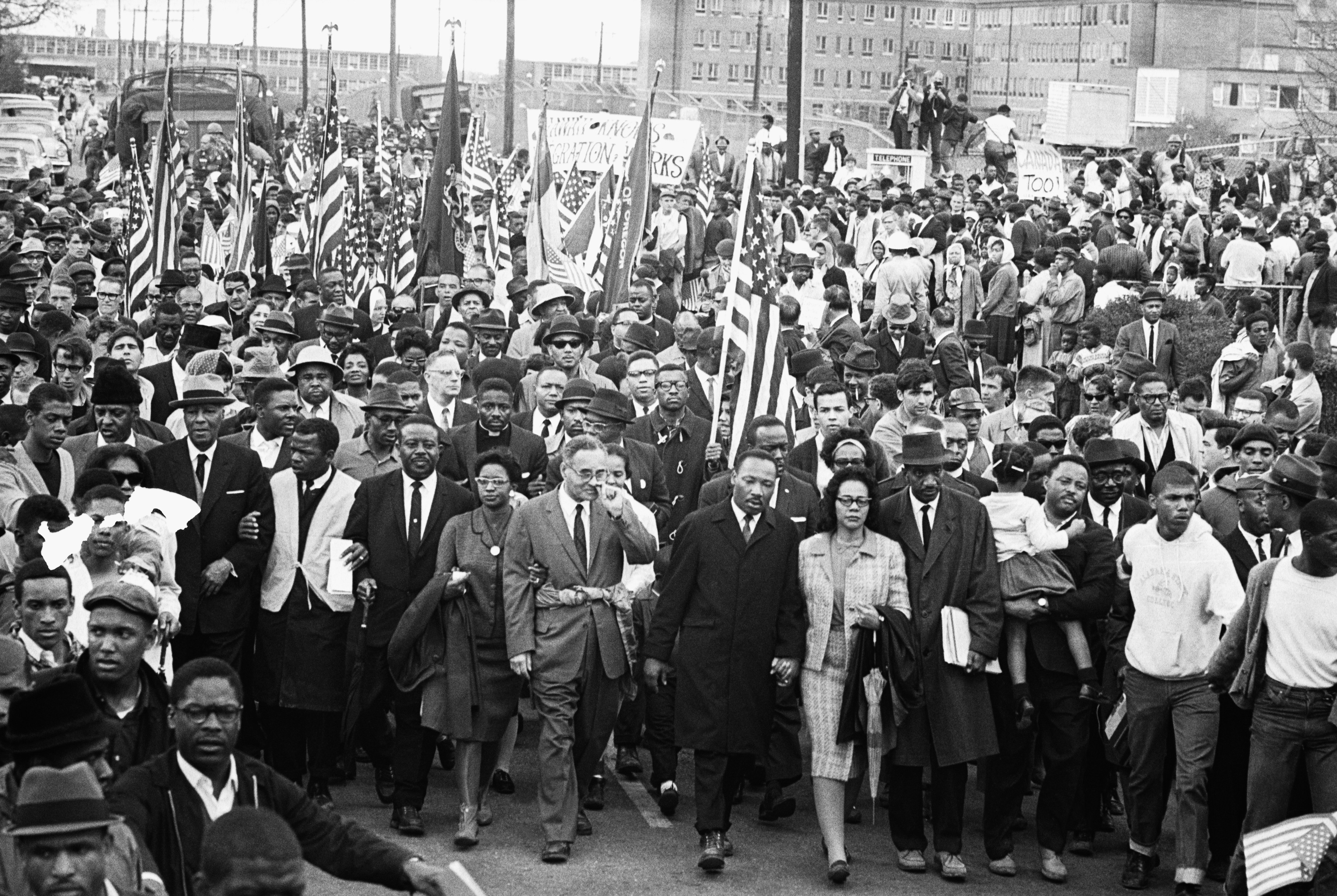ASU and Voting Rights

Students being carried away during a sit-in demonstration in front of the Alabama State Capitol
(Photo Courtesy of Alabama Department of Archives and History)
In March 1965, students from all over the nation descended on Montgomery, Alabama to join activists from Alabama State College (ASC) and Tuskegee Institute, in two weeks of almost daily voting rights demonstrations. Protests in Montgomery began on March 10, three days after marchers attempting to cross the Edmund Pettus Bridge in Selma were attacked by Alabama law enforcement officials.
In the days after “Bloody Sunday,” members of the Student Nonviolent Coordinating Committee (SNCC) left Selma, Alabama, where the Southern Christian Leadership Conference (SCLC) had taken charge of voting rights activities. SNCC established a “Second Front” in Montgomery. From the Alabama capital, SNCC coordinated 7,000 protestors in around-the-clock demonstrations at the nation’s capital in Washington, D. C. At the same time, SNCC directed thousands of student protests in dozens of cities throughout the nation. The sheer number and intensity of the protests around the nation helped convince President Lyndon B. Johnson to introduce, and Congress to support, federal voting rights legislation.
ASC students played an important role in these events as they did in the final events of the 1965 Selma-to-Montgomery March. The intensity of Montgomery protests from March 10 to March 28 drew national press coverage to the Alabama capital. College students were joined by area high school students, and together they marched on the state capitol building in an attempt to present Governor George Wallace with a voting rights petition. Their demands for voting rights also took the protestors to the Montgomery County Courthouse and the Montgomery City Hall. During the students’ march to the state capitol on March 15, they were attacked on the corner of Jackson and High Streets by a sheriff’s posse and local police. The next day, March 16, student demonstrators were again attacked by local law enforcement at the intersection of Washington and Decatur Streets in Montgomery. Newspapers from around the nation, including the New York Times, the Los Angeles Times and the Washington Post, photographed the beatings, arrests, and the incarceration of hundreds of students.
On March 24, almost a thousand ASC students marched from the campus across town to meet the huge procession from Selma as they neared the state capital. ASC alumnus and SCLC aide, Rev. Richard Boone traveled ahead to generate support.
The final events of the march took place on the evening of March 24 and March 25. On March 24, the marchers made their way to the City of St. Jude in Montgomery for a night of entertainment by nationally known movie stars and singers. The next day, 25, 000 demonstrators left St. Jude and marched through Montgomery to the state capitol where several civil rights activists spoke to the crowd. Dr. Martin Luther King Jr. ended the proceedings with a speech he entitled “Our God is Marching On.”

